


 Co-Authors Joseph Duckett and Jeffrey Pierce argue that we should “Hold It” long enough to follow facts and science before accepting environmental misconceptions. History shows popular beliefs about environmental hazards and health risks – alarmist or dismissive – are sometimes wrong.
Co-Authors Joseph Duckett and Jeffrey Pierce argue that we should “Hold It” long enough to follow facts and science before accepting environmental misconceptions. History shows popular beliefs about environmental hazards and health risks – alarmist or dismissive – are sometimes wrong.
We recommend their new book, Hold It! The Case for Hard Thinking, Honesty and Humility when Assessing Environmental Health Risks. It’s the #1 new release in Amazon’s Pollution Engineering category. Both authors take an objective look at some of today’s and yesterday’s most controversial environmental topics.
You can read a review here and buy the book on Amazon.
SCS Engineers has built an impressive history, set of accomplishments and qualifications in designing, building and operating Renewable Natural Gas (RNG) facilities. SCS creates the RNG by removing almost all other gas constituents except the methane. These other constituents include carbon dioxide, hydrogen sulfide (H2S), sulfur compounds, and volatile organic compounds (VOCs), siloxanes, oxygen, nitrogen, and waste.
Leaders such as Jeff Pierce of SCS Engineers employ decades of energy systems expertise to analyze and evaluate the effects of variations in processes and the parameters important to successful facilities. They model and evaluate complex systems and processes to evaluate plant performance. They account for project objectives and requirements while considering technical, business, energy, and environmental objectives.
Biogas recovery systems are feasible for landfills, large dairy, hog, poultry, and beef operations. In short, using science and facts to make sustainable decisions has a much greater impact on addressing climate change.

Save the Date for Land Recycling!
Seize the opportunity to meet with colleagues working to reuse, rebuild, and revitalize communities through land recycling! This June, the Center for Creative Land Recycling (CCLR), U.S. EPA Region 9, and the CA Department of Toxic Substances Control’s (DTSC) Office of Brownfields will host the third California Land Recycling Conference (CALRC) in person in Carson, CA. The Conference offers an exciting space to learn, connect, and be inspired.
CALRC will focus on the most timely issues unique to California and resonate with the national big-picture, including affordable housing, vapor intrusion, funding, and equitable development. As evidenced by the Bipartisan Infrastructure Law (BIL), Build Back Better, and other federal and state revitalization priorities, we see historic investment in brownfields, climate, and economic revitalization. And California is leading the charge.
Come reuse, rebuild, and revitalize! Save the date for June 21-23, 2022, in Carson, CA!
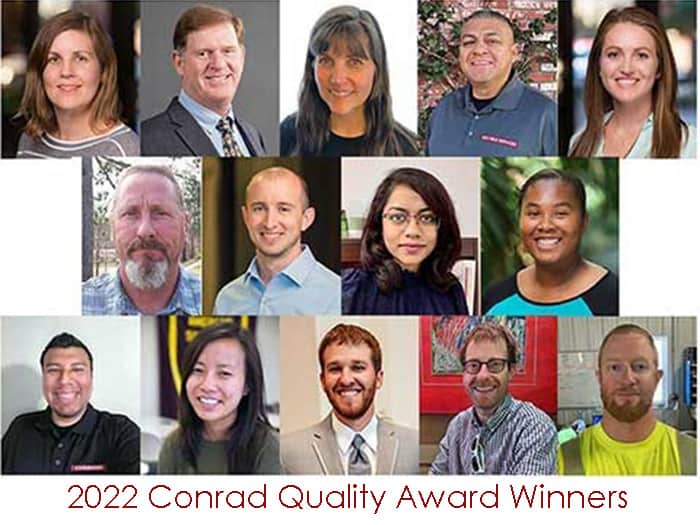
These are a few words to describe our 2022 Conrad Quality Award Recipients. Celebrating the accomplishments of these SCS employee-owners, the Conrad Award highlights the level of quality we seek as a company.
Click here to read about our colleagues.
Conrad Quality Focus Awards recognize SCSers for their sustained quality performance above and beyond what is required by their job. The Awards Program helps keep our attention on quality every day — something we all strive for to meet and exceed our clients’ needs and expectations.
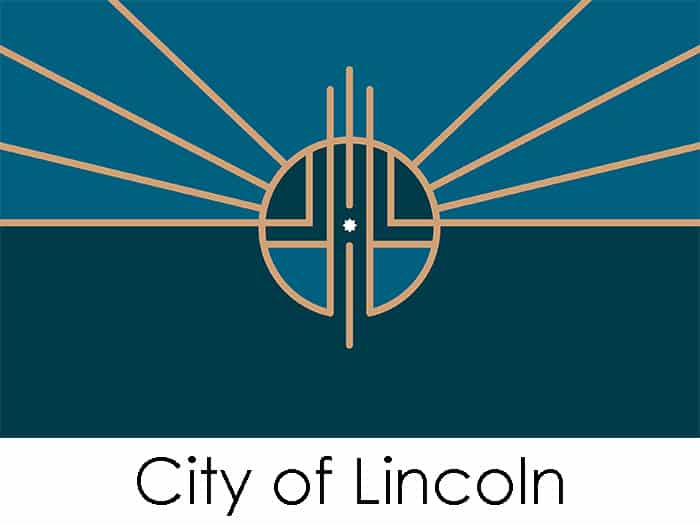
The City Council of the City of Lincoln, Nebraska, recently approved a four-year service agreement with SCS Engineers for comprehensive environmental solutions and technology supporting the Solid Waste Management Division and Lincoln Water System.
The contract provides professional engineering and technical support for the City’s two Solid Waste Management Facilities, located on Bluff Road and North 48th Street in Lincoln. Modern landfills such as these contain complex systems to protect the health of nearby communities and the environment. Lincoln’s Solid Waste Management Division uses SCS professionals’ expertise and proprietary software for air quality and gas collection and control systems (GCCS), operations, monitoring, and maintenance. These environmental services keep the landfills fully compliant with regulatory requirements while aligning with the City’s system performance goals and anticipated operational and maintenance activities.
The City is using SCSeTools® software designed for landfills to support managing the monitoring data to gauge operational health continually. The firm’s comprehensive environmental services include sampling and monitoring groundwater, stormwater at both facilities, and leachate analysis at the Bluff Road Landfill.
SCS assists with scheduled testing and reporting to federal, state, and local agencies, including the Environmental Protection Agency, Nebraska’s Department of Environment and Energy, and the Lincoln-Lancaster County Health Department. Primarily these public reports cover monitoring summaries, statistical analyses of analytical results, and review of emission sources, factors, and calculations associated with the GCCS. They also include greenhouse gas reports, estimates, Title V permit requirements and documentation, NPDES General Permit support, and Stormwater Pollution Prevention Plans.
Michael Miller, an SCS vice president and one of the firm’s environmental due diligence experts, said,” We’re privileged that the City of Lincoln entrusts us to partner with its professionals to maintain the landfills’ safe and efficient operations. The Solid Waste Management Division and Lincoln Water System support the citizens with essential services and the environment; we’re honored to assist.”
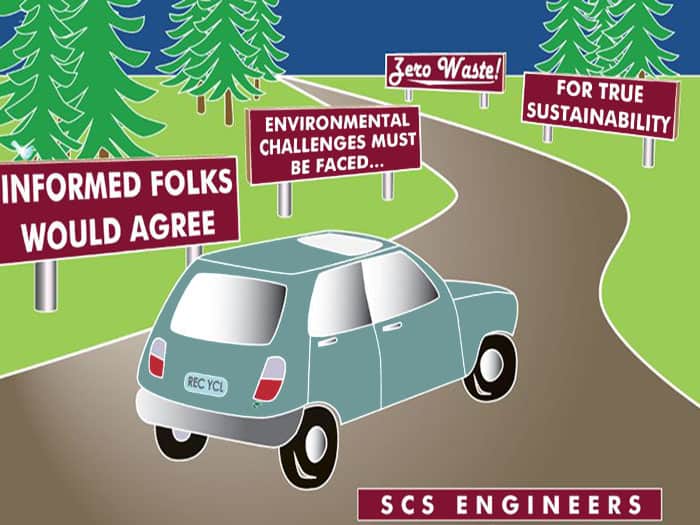
Recycling and reuse started in 1987 and continues today with cities embracing public-private partnerships with their recycling processors. They recognize the vital and interrelated role of both the public and private sectors in recovering recyclables. In the U.S., manufacturing and end-use markets are seeing more demand for recyclable materials. Companies are held accountable for misleading advertising instead of changing packaging or labeling how to recycle clearly.
Through leadership, innovation, and strategic planning, cities continue to help lead the way on recycling to achieve landfill diversion and provide for more environmentally and financially sustainable solid waste management systems for the next 30 years.
Read more from the authors of this up-lifting article, The Journey of Recycling, in the March edition of APWA.
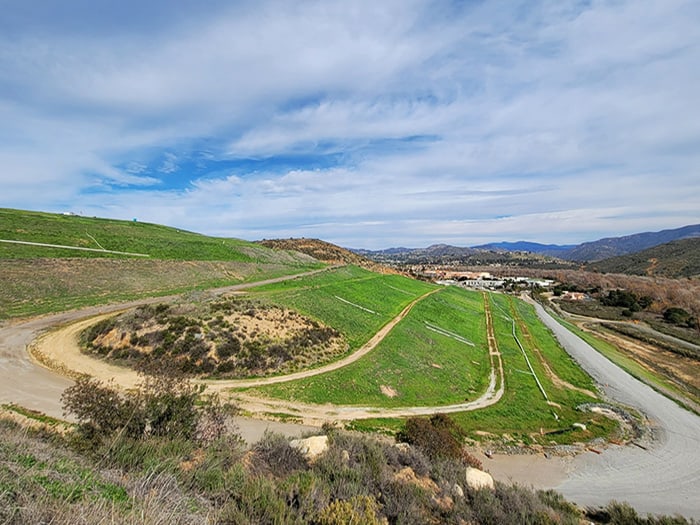
When we care about our work, we ask this question because we want to contribute and to feel our contributions are valuable. At SCS, it’s important to know we belong too.
As an SCS employee-owner, you work alongside a team of experts – professionals, scientists, and technicians who enhance your sense of self and skills while growing your career. You have a common purpose while pursuing goals for your clients.
Plus, you share a passion knowing that every project and person on your team helps the environment and localities.
At SCS, we turn contaminated properties into safe, vibrant communities; help our clients deliver essential services and products in the most environmentally sustainable way; make workers and communities safer; build some of the most innovative technology on the market.
Whether your job is in the field, office, or sharing your experiences at conferences – we’re passionate about our teams. When life throws you a wonderful opportunity or a curveball, you have colleagues who “get” how you feel – their validation and support resonates on a deep level.
Why work at SCS Engineers? Why not; join a fast-growing, award-winning environmental firm − people who have an affinity for teamwork. And as employee-owners, who share in the profits.
Make a connection today – become an SCSer!
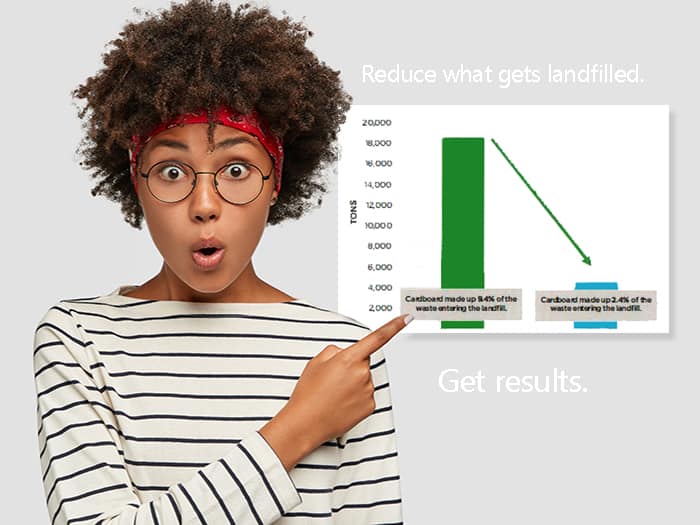
The City of Lincoln’s Transportation and Utilities (LTU) Department/Solid Waste Management Division manages all solid waste generated within its service area to protect the public’s health, safety, welfare, and environment. They do so cost-effectively and in compliance with its solid waste management plan, Solid Waste Plan 2040. The plan, updated in 2020 through a process facilitated by SCS Engineers, produces remarkably good results.
The City undertook a comprehensive residential and commercial recycling communication, education, engagement, and behavior change initiative.
Read more about Lincoln’s success and see results in this APWA article (March 2022 edition).
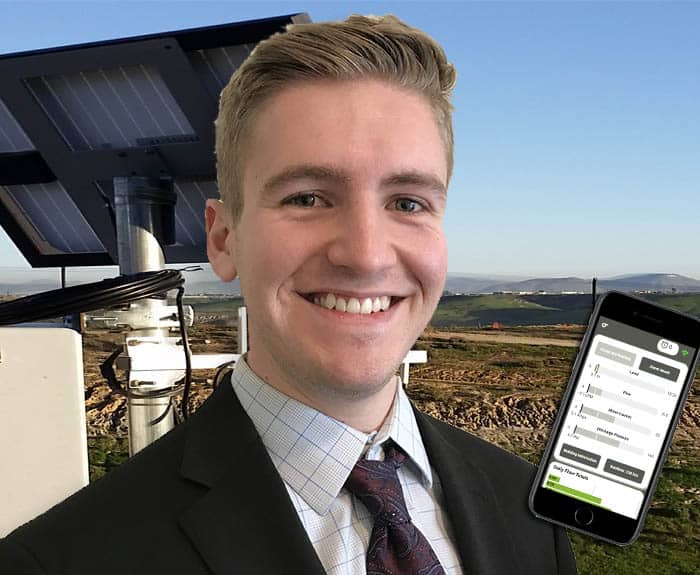
The Solid Waste Association of North America (SWANA) recently featured Sam Rice of SCS Engineers in its monthly newsletter. Sam is a member of the SWANA Young Professionals (YP) group and also one of Waste 360’s 40-Under-40 winners this year.
Sam specifically focuses on developing remote monitoring and control (RMC), supervisory control and data acquisition (SCADA) systems, and control systems to meet his client’s environmental management needs. These technology solutions help the waste industry reduce environmental and health and safety risks, reduce cost, and improve the quality of life for workers in the industry and the communities surrounding our waste facilities.
The secret to his success is listening to the client’s needs and using technology to address those needs. Some specific ways that he has impacted the industry are below:
Sam takes on his client’s goals as his own, then develops and implements solutions. His approach is to attack any challenges with vigor, identify and act on ways to help improve things and jump in to help others when the need arises. His inquisitive mind helps him quickly identify and remedy issues that our clients are having; this helps keep their critical infrastructure online and operating at its highest capacity.
Sam routinely mentors others and helps his coworkers understand new technologies because he truly wants to see his coworkers and clients succeed. For example, a project he managed won two industry awards in 2020: an Environmental Business Journal Technology Merit Award and an Inductive Automation Firebrand Award which he shares with his client and coworkers.
SCS promotes leadership and ownership at every career stage, providing you with consistent opportunities to grow and learn. We offer an engaging and supportive environment, whether you’re interacting with senior leadership, out in the field with clients, or attending events.
Leading our YPs is the Young Professionals Planning Committee (YPPC), organizing and hosting educational and social events, providing mentorship opportunities, skills and leadership development, and much more.
As an employee-owned company, we know that ownership makes a difference. When you and I succeed, we all thrive. Hence, the YPPC strives to build technically savvy leaders and teams using in-house software, experts, and solutions. With an ever-growing environmental firm focusing on stewardship, we all play a role. Just like Sam!
Consider a career at SCS Engineers – click here!
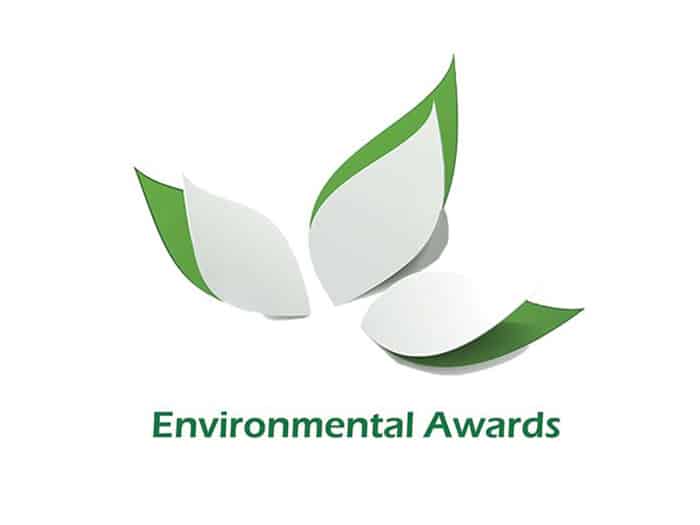
The Environmental Journal Recognizes Firms Annually for Business Achievement in Growth, Technology, and Innovation.
Environmental Business Journal® (EBJ), a business research publication providing business intelligence to the environmental industry, is honoring SCS Engineers with three Business Achievement Awards for its innovative technologies and environmental achievements in 2021.
EBJ is recognizing SCS with an Environmental Business Achievement Award for the firm’s scientists, engineers, and consultants producing technologies and creating sustainable programs that help run industrial operations and essential public services more efficiently. These solutions reduce greenhouse gases and environmental impacts while increasing worker safety. The agricultural, food processing, and manufacturing sectors find SCS’ technologies and sustainability programs valuable.
The firm’s environmental technologies are receiving recognition with two Information Technology Awards for SCSeTools® and the SCS Remote Monitoring and Control® (RMC) Drone Program.
SCSeTools is a data management platform built by landfill practitioners that helps capture more methane and reduce operational and compliance costs on one-third of the landfills in the U.S.
The RMC drones fly with cameras and technology support safer, cleaner operations for industry, energy, and waste management with real-time greenhouse gas detection, mapping, temperature readings, and volumetrics.
EBJ recognized SCS Engineers in previous years for its remote monitoring and control technology, composting solutions, commercial and residential land remediation, and renewable natural gas plants.
Jim Walsh, President and CEO of SCS Engineers, said, “Thanks to our clients, SCS Engineers has received these awards and industry recognition for research and technology innovations; our greatest reward is client satisfaction.”
“In a year of economic recovery in 2021 that still posed its own challenges, it is a testament to the resilience of the environmental industry and its leaders in business and innovation to have such a fine constellation of winners of the annual EBJ Awards,” said Grant Ferrier, president of Environmental Business International Incorporated.
SCS Engineers will officially receive the EBJ Business Achievement awards at the Environmental Industry Summit XX this month.
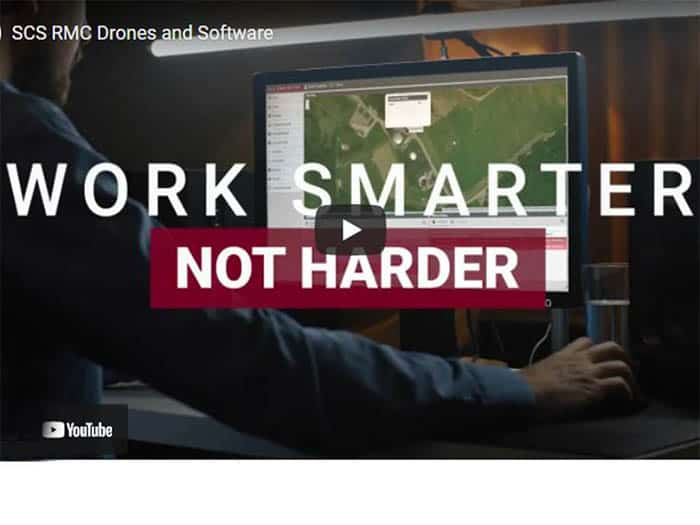
SCS Engineers shows you in this short video featuring SCS Remote Monitoring & Control technology built for landfill owners and operators, solar farms, and for use on pipelines by SCS Engineers, landfill and environmental practitioners.